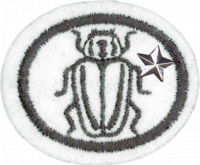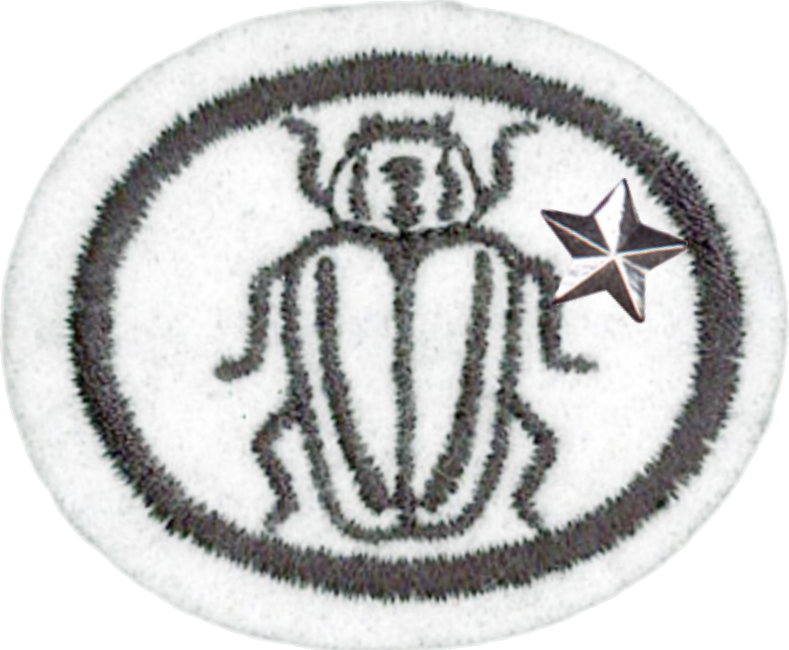Difference between revisions of "AY Honors/Insects - Advanced/Answer Key/es"
From Pathfinder Wiki
< AY Honors | Insects - AdvancedAY Honors/Insects - Advanced/Answer Key/es
(Created page with "</noinclude>") |
|||
| (14 intermediate revisions by 2 users not shown) | |||
| Line 1: | Line 1: | ||
| − | + | {{HonorSubpage}} | |
| − | |||
| − | {{ | ||
| − | |||
| − | |||
| − | |||
| − | |||
| − | |||
| − | |||
| − | |||
| − | }} | ||
| − | |||
| − | |||
| − | |||
| − | |||
| − | |||
| − | |||
| − | |||
<section begin="Body" /> | <section begin="Body" /> | ||
{{ansreq|page={{#titleparts:{{PAGENAME}}|2|1}}|num=1}} | {{ansreq|page={{#titleparts:{{PAGENAME}}|2|1}}|num=1}} | ||
| Line 43: | Line 26: | ||
{{ansreq|page={{#titleparts:{{PAGENAME}}|2|1}}|num=4}} | {{ansreq|page={{#titleparts:{{PAGENAME}}|2|1}}|num=4}} | ||
<noinclude></noinclude> | <noinclude></noinclude> | ||
| − | <!-- | + | <!-- 4. Explicar el ciclo de vida de los insectos de cuatro diferentes familias. --> |
| − | |||
| − | |||
{{clear}} | {{clear}} | ||
| Line 67: | Line 48: | ||
{{ansreq|page={{#titleparts:{{PAGENAME}}|2|1}}|num=5}} | {{ansreq|page={{#titleparts:{{PAGENAME}}|2|1}}|num=5}} | ||
<noinclude></noinclude> | <noinclude></noinclude> | ||
| − | <!-- | + | <!-- 5. Nombrar dos clases de insectos sociales. ¿En qué se diferencian de los insectos no sociales? --> |
| − | |||
{{clear}} | {{clear}} | ||
| Line 80: | Line 60: | ||
{{ansreq|page={{#titleparts:{{PAGENAME}}|2|1}}|num=6}} | {{ansreq|page={{#titleparts:{{PAGENAME}}|2|1}}|num=6}} | ||
<noinclude></noinclude> | <noinclude></noinclude> | ||
| − | <!-- | + | <!-- 6. Nombrar al menos cuatro insectos que transmiten enfermedades al hombre. Nombrar al menos una enfermedad trasportada por cada una de ellos. --> |
| − | |||
| − | |||
| − | |||
| − | |||
| − | |||
| − | |||
| − | |||
| − | |||
| − | |||
| − | |||
| − | |||
| − | |||
| − | |||
| − | |||
| − | |||
| − | |||
| − | |||
| − | |||
| − | |||
| − | |||
| − | |||
| − | |||
| − | |||
| − | |||
| − | |||
| − | |||
| − | |||
| − | |||
| − | |||
| − | |||
<noinclude></noinclude> | <noinclude></noinclude> | ||
| Line 116: | Line 66: | ||
{{ansreq|page={{#titleparts:{{PAGENAME}}|2|1}}|num=7}} | {{ansreq|page={{#titleparts:{{PAGENAME}}|2|1}}|num=7}} | ||
<noinclude></noinclude> | <noinclude></noinclude> | ||
| − | <!-- | + | <!-- 7. Hacer uno de los siguientes: --> |
<noinclude></noinclude> | <noinclude></noinclude> | ||
{{ansreq|page={{#titleparts:{{PAGENAME}}|2|1}}|num=7a}} | {{ansreq|page={{#titleparts:{{PAGENAME}}|2|1}}|num=7a}} | ||
| − | <noinclude></noinclude> | + | <noinclude></noinclude> |
{{clear}} | {{clear}} | ||
| Line 142: | Line 92: | ||
{{ansreq|page={{#titleparts:{{PAGENAME}}|2|1}}|num=8}} | {{ansreq|page={{#titleparts:{{PAGENAME}}|2|1}}|num=8}} | ||
<noinclude></noinclude> | <noinclude></noinclude> | ||
| − | <!-- | + | <!-- 8. Fabricar y usar una trampa para insectos voladores nocturnos. --> |
| − | |||
{{clear}} | {{clear}} | ||
| Line 151: | Line 100: | ||
{{ansreq|page={{#titleparts:{{PAGENAME}}|2|1}}|num=9}} | {{ansreq|page={{#titleparts:{{PAGENAME}}|2|1}}|num=9}} | ||
<noinclude></noinclude> | <noinclude></noinclude> | ||
| − | <!-- | + | <!-- 9. Realizar una de las siguientes actividades: --> |
<noinclude></noinclude> | <noinclude></noinclude> | ||
{{ansreq|page={{#titleparts:{{PAGENAME}}|2|1}}|num=9a}} | {{ansreq|page={{#titleparts:{{PAGENAME}}|2|1}}|num=9a}} | ||
| Line 202: | Line 151: | ||
{{ansreq|page={{#titleparts:{{PAGENAME}}|2|1}}|num=9c}} <!--T:40--> | {{ansreq|page={{#titleparts:{{PAGENAME}}|2|1}}|num=9c}} <!--T:40--> | ||
<noinclude></noinclude> | <noinclude></noinclude> | ||
| − | |||
| − | + | {{clear}} | |
| − | |||
| − | + | {{clear}} | |
| − | |||
| − | |||
<noinclude></noinclude> | <noinclude></noinclude> | ||
| Line 215: | Line 160: | ||
{{CloseReq}} <!-- 9 --> | {{CloseReq}} <!-- 9 --> | ||
<noinclude></noinclude> | <noinclude></noinclude> | ||
| − | == | + | ==Referencias== |
| − | |||
| − | |||
<noinclude></noinclude> | <noinclude></noinclude> | ||
| − | + | {{CloseHonorPage}} | |
Latest revision as of 19:27, 25 July 2022
Insectos - Avanzado
Nivel de destreza
2
Año
1949
Version
03.12.2025
Autoridad de aprobación
Asociación General
1
Tener la especialidad de Insectos.
Para consejos e instrucciones, véase Insectos.
2
Realizar una de las siguientes actividades:
- a. Añadir a su colección 50 especies de insectos que representen al menos 10 diferentes órdenes. Las etiquetas deben incluir el nombre del colector, fecha, localidad, el orden, la familia, género y nivel de especie o nombre. (Especímenes montados con descuido y rotas no serán aceptables).
- b. Añadir a sus dibujos a color o pinturas 50 especies de insectos que representen al menos 10 diferentes órdenes. Dibujos o pinturas deben ser del tamaño real o más grande, para mostrar los detalles de los pequeños insectos, y en colores naturales. Colocar una etiqueta a los dibujos con la fecha, orden, familia, género y el nombre del nivel de especie.
- c. Añadir a sus imágenes de color 50 especies de insectos que representen al menos 10 diferentes órdenes. Todas las imágenes deben estar enfocadas, en primer plano y debidamente etiquetadas, indicando dónde fue fotografiado, fecha de la fotografía, nombres comunes y cada género o nombre del nivel de especie.
3
¿De qué forma las estructuras especiales y los hábitos de los insectos encajan de forma admirable para la vida?
4
Explicar el ciclo de vida de los insectos de cuatro diferentes familias.
5
Nombrar dos clases de insectos sociales. ¿En qué se diferencian de los insectos no sociales?
6
Nombrar al menos cuatro insectos que transmiten enfermedades al hombre. Nombrar al menos una enfermedad trasportada por cada una de ellos.
7
Hacer uno de los siguientes:
7a
Red aérea
7b
Red de barrido
7c
Red acuático
8
Fabricar y usar una trampa para insectos voladores nocturnos.
9
Realizar una de las siguientes actividades:
9a
Identificar a partir de fotos o de insectos vivos uno de cada una de los siguientes familias:
i
Acuáticos
ii
Que comen hojas
iii
Que enrollan hojas
iv
Que perforan madera
v
Que comen papel
vi
Parásitos que viven en el cuerpo de aves o mamíferos
9b
Describir las castas de las termitas y abejas
9c
Comparar el grado de inteligencia exhibidos por un saltamontes o un escarabajo y una hormiga, abeja o avispa.


